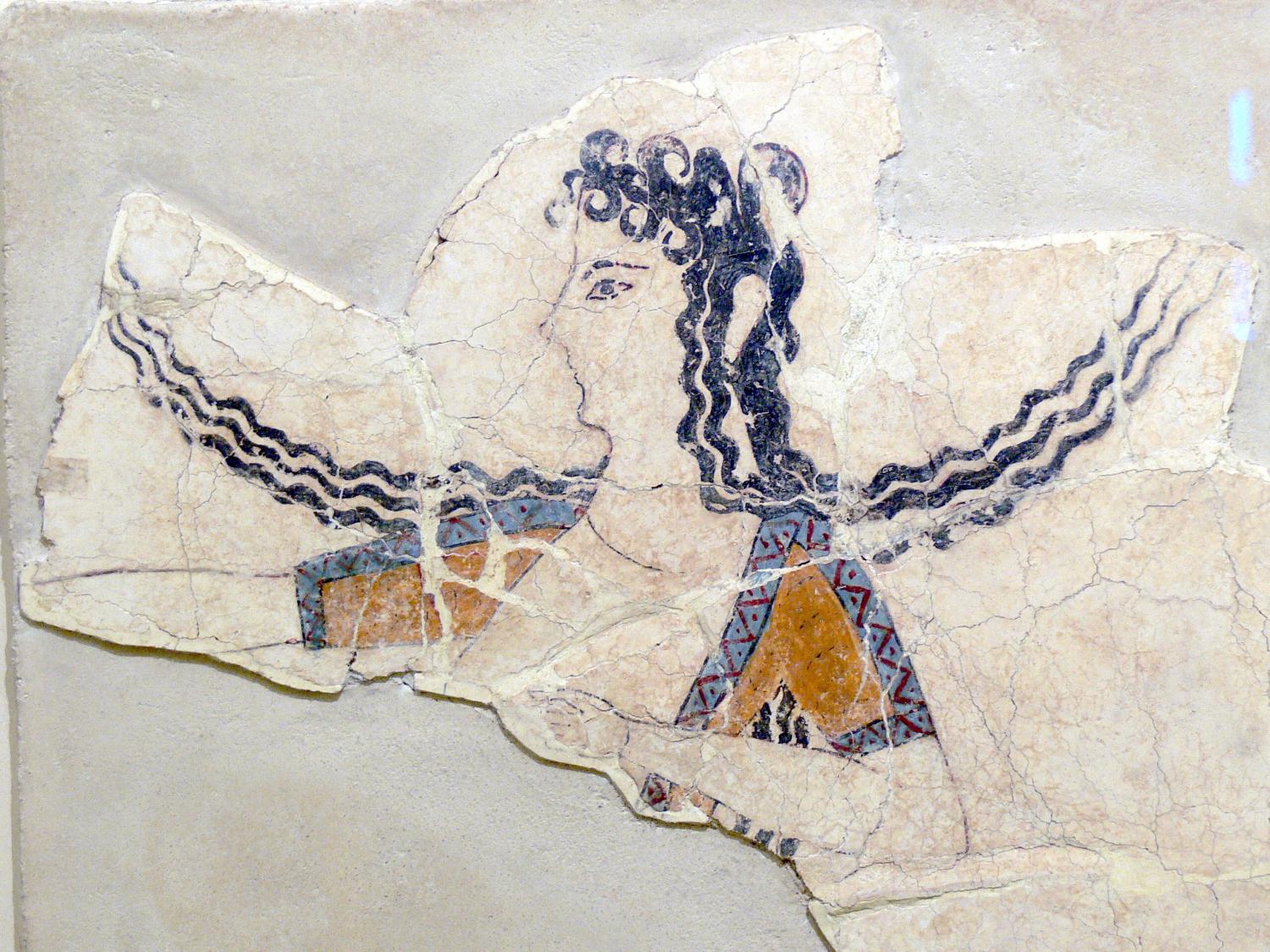Among the notable finds in Ugarit was an ivory relief of a bare-breasted goddess, holding ears of wheat in each hand and seated between two goats standing on their hind legs. She greatly resembles the goddesses frequently found on the large Mediterranean island of Crete. Cretan civilization is often called Minoan, after Minos, the legendary founder of the local dynasty.
Sir Arthur Evans, a British archaeologist, divided the Minoan culture into three main periods; today these are expressed as Early Minoan (c. 2500-c. 1950 B.C.), Middle Minoan (c. 1950-1550), and Late Minoan (c. 1550-1100). Each of these three periods is further subdivided to enable easy discussion of the objects found. In Crete such dating is of surpassing importance, partly because we have not yet learned how to read the earliest writing, some of it in hieroglyphics and some of it in a script known as Linear A.
Much is conjectured about Linear A, and some words have been plausibly deciphered, though it cannot yet be read. Linear A is surely not Greek. Professor Cyrus Gordon argued that it is a northwest Semitic dialect related to Phoenician and that the Minoans who wrote it were a Semitic people who came to Crete from the Nile Delta about 1800 B.C. Other scholars strongly maintained that the Minoans came from Anatolia. Since we have only about two hundred Linear A texts, it is probable that, even after scholars have learned to read it
confidently, it will add little to what we have long known from purely archaeological evidence.
Such evidence has turned up in abundance in the palace of Minos at Knossos (modern Heraklion), found and partly reconstructed by Evans, and in other palaces and tombs in other parts the island, of which the most recently excavated is at Kato Zakros. Pottery and seals found on Crete show that the Cretans were a busy maritime people whose ships not only plied the Mediterranean but presumably managed to defend the island against invaders, since none of the palaces was fortified. Expanding at the expense of other islanders, the Cretans had garrisons and even colonies abroad.
The palace of Minos is characterized by many rooms, a great staircase, strikingly beautiful wall frescoes, massive columns, many six-foot-tall stone storage jars for olive oil or wine, and an elaborate plumbing system with pipes, running water, and ventilation. So complex was this palace that Evans believed that he had discovered the building that had inspired the ancient Athenian legend of the Labyrinth, a place (most likely a cave) on Crete with a system of rooms and corridors so maze-like that it was impossible to find one’s way without a guide or a thread to drop behind, so that one might later retrace one’s steps.
Minoan artisans produced delicate pottery hardly thicker than an eggshell, decorated with birds, flowers, and marine animals. They also made ivory or pottery statuettes of the bare-breasted goddess, who often holds a snake in each hand, and many paintings of bulls, some showing young athletes leaping over a bull’s back in a ritual game. Athenian legend held that their ancestors had been forced to send young men and maidens to be sacrificed each year by the Cretans to their Minotaur-halfman, half-bull. Certainly the many pairs of bull horns that have been found in Knossos and elsewhere illustrate the importance of the animal in the Cretan religion, in which a double ax, found in many sizes from full-sized models in bronze to tiny miniatures in gold, also played a role.
The reasons for the end of Cretan prosperity are still hotly debated. Was it natural catastrophes (earthquakes, tidal waves, fires) that destroyed the palace of Minos around 1645 B.C., again about 1500, and a third time about 1400? Or did invading Hyksos, on their way out of Egypt after their occupation, do the damage? Did mainland Greeks, crossing from the north, cause the destruction of 1500? Nobody can be quite sure about the earlier destructions, which were repaired, but the last disaster may be attributable to actions of mainland Greeks.

